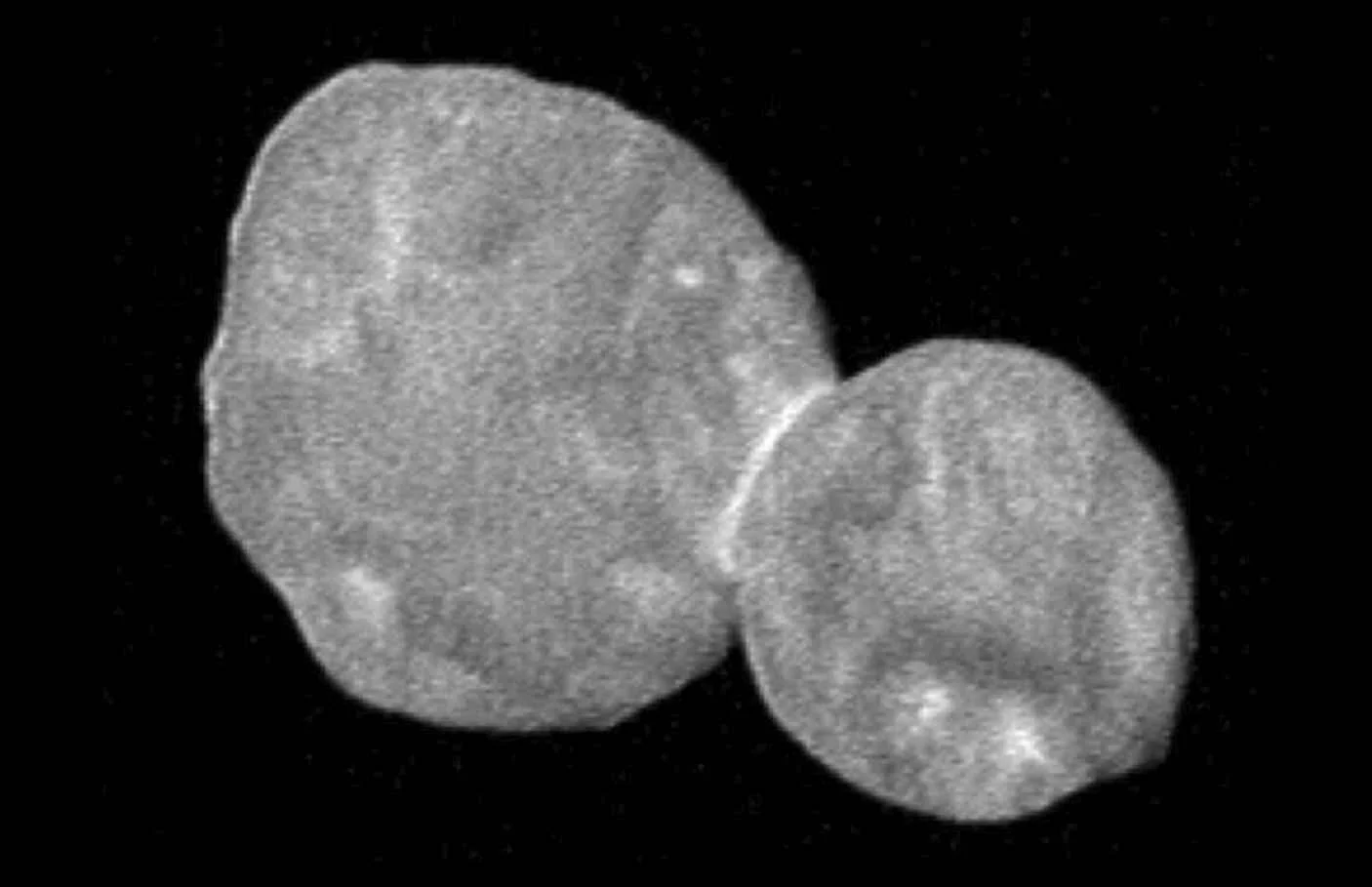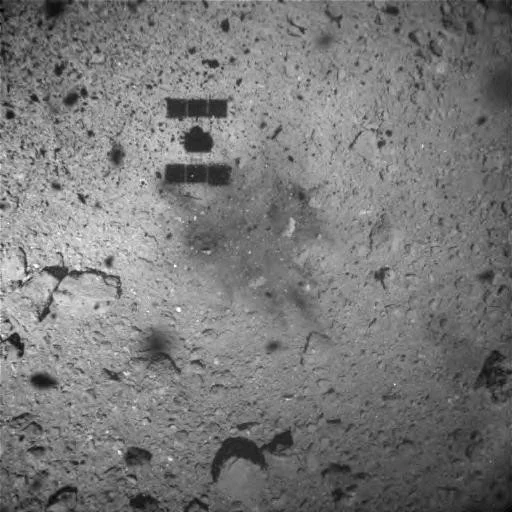Ultima Thule May Answer NEO Questions
Highest resolution image yet of Optima Thule, the most distant object ever visited by a human spacecraft. Credit: NASA/Johns Hopkins University Applied Physics Laboratory/Southwest Research Institute)
On Jan 1, 2019, the NASA New Horizons spacecraft flew by Ultima Thule (2014 MU69), a 31 km wide Kuiper belt object that is the most distant object ever visited by a human spacecraft. Kuiper belt objects (KBOs) are relevant to near-Earth object (NEO) studies because it is estimated that about 6% of NEOs formed in the Kuiper belt and migrated in over time [Bottke et al., 2002]. By studying unaltered KBOs, we gain a better understanding of how certain NEOs formed and evolved as they traveled into the inner Solar System. This insight allows us to design and build more effective missions that can eventually prospect and mine NEOs for valuable resources.
The New Horizons spacecraft performed it’s flyby of the Pluto system on July 14, 2015, over nine years after it launched from Earth on January 19, 2006. Since the beginning of the New Horizons mission, there was the possibility of follow on flybys once the spacecraft passed Pluto, but the object to visit was not selected (or even known) until after launch. This was the first time a NASA mission was launched that had an object of interest discovered after launch.
Even though the best images received of Ultima Thule are low resolution, the images received just two days prior to flyby are pixelated blobs. Credit: NASA/Johns Hopkins University Applied Physics Laboratory/Southwest Research Institute
Even before all data had been transmitted from the Pluto flyby (it took about 16 months to transmit the 6.25 gigabytes of data), the next target after Pluto was announced: Ultima Thule. This is amazing because Ultima Thule was selected a brief year and two months after its discovery!
The journey of New Horizons from Pluto to Ultima Thule took 1,267 days. As it flew by at 14 kilometers per second, the spacecraft used it’s many sensing instruments to capture data about the object. Learning more about Ultima Thule was important pre-flyby because mission planners needed to ensure the area around the object was clear of debris, and to calculate more accurate orbital dynamics models to use for navigation and spacecraft pointing.
Animation showing the rotation of Ultima Thule that was composed from two images taken from the NASA New Horizon spacecraft. Credit: NASA/JHUAPL/SwRI
Due to the massive distances involved (New Horizons is racing away from us, already passing 44 AU out) and low powered transmitter, it is expected to take 20 months to download all the data collected during the flyby. However, much has already been learned about Ultima Thule since the flyby, including a set of images taken on January 1st by the Long-Range Reconnaissance Imager (LORRI) (seen below). These images are about 140 meters per pixel, which is quite a low resolution, but was required to allow the spacecraft to quickly transmit them back to Earth without having to wait many weeks/months. In addition to subsequent images having multiple times better resolution per pixel, a wide variety of other data types from the spacecraft’s seven instruments will be returned in the coming months.
Data transmission of images is currently on pause until around January 10th as the New Horizons spacecraft passes behind the Sun relative to Earth, but findings have already been made from the data received so far. No evidence of significant rings or satellites larger than a mile in diameter were found, and no evidence of an atmosphere has been detected. Additionally the object represents a contact binary, where both lobes look nearly identical in color but of a different size. Based on this, the original temporary name for the object of Ultima Thule was converted to a new designation of Ultima as the larger lobe and Thule as the smaller.
Left is the first color image of Ultima Thule that was taken at a distance of 137.000 km by New Horizon’s Multispectral Visible Imaging Camera (MVIC). Center is a higher spatial resolution image taken by the Long-Range Reconnaissance Imager (LORRI). Right is the color data from MVIC overlaid onto the LORRI image. Credit: NASA/Johns Hopkins University Applied Physics Laboratory/Southwest Research Institute
The object was observed to have many brighter regions, and it is believed to be composed of a variety of materials including water ice, methane, nitrogen, and ammonia. Some of the dark red-ish areas appear similar to those found on Pluto, likely being the result of space weathering on surface material.
Visualization of Ultima Thule showing some of the surface features. Credit: NASA/JHUAPL/SwRI/James Tuttle Keane
While Ultima Thule will not be directly targeted for a future space resource mission, it will reveal many characteristics of unaltered asteroid formation and evolution. This object has likely been untouched since the formation of the Solar System 4.5 billion years ago, and studying it will help refine our understanding of planetesimal formation and planetary accretion. Understanding these processes is important for learning the composition and characteristics of asteroids and comets. Lastly, all of the technology developed and refined during this mission will be referenced and used for future deep space missions, including those that seek to make deep space economical.
REFERENCES
https://www.nytimes.com/interactive/2018/12/31/science/new-horizons-ultima-thule-flyby.html
http://pluto.jhuapl.edu/News-Center/News-Article.php?page=20190103
https://spacenews.com/new-horizons-ready-for-ultima-thule-flyby
Bottke, William Frederick, ed. Asteroids III. University of Arizona Press, 2002.










